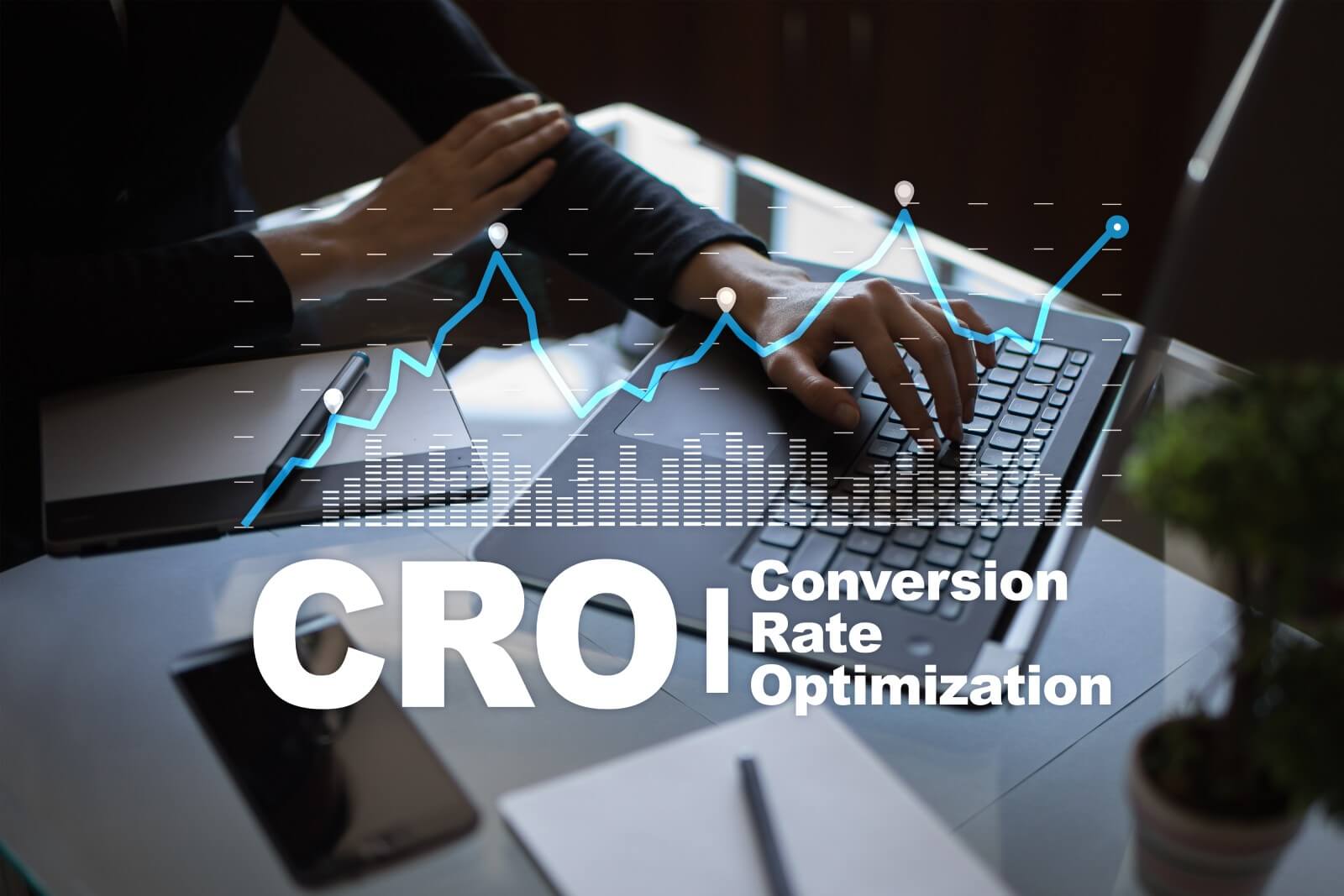Today, marketers focus their efforts on driving traffic to websites to generate well-qualified leads. From there, it is the sales reps who take responsibility for turning those opportunities into business for the company.
However, this whole process only represents half of the work that needs to be done. Getting more traffic from existing leads instead of new traffic can help you craft a much more sustainable growth strategy.
Therefore, Conversion Rate Optimization (CRO) comes into play.
What is conversion rate optimization (CRO)?
Conversion rate optimization (CRO) is the process of improving the percentage of website visitors who take the desired action, such as completing a purchase, subscribing to a newsletter, or requesting more information about a product or service.
This optimization is achieved by improving the content, establishing new work processes and even through trials and tests to determine the best customer relationship model.
One of the advantages provided by this methodology is that the commercial relationship between the brand and its market is much better qualified and also reduces the cost of acquiring new customers.
Why focus on conversion rate optimization?
There are two main reasons to focus on CRO:
- To get more from your existing traffic: If you can convert even a small percentage of your website visitors into customers or leads, you’ll see a significant increase in revenue.
- To improve the ROI of your marketing campaigns: By optimizing your conversion rate, you will get more leads and customers from your marketing campaigns at a lower cost. This will improve your return on investment (ROI).
What is a good conversion rate?
A good conversion rate depends, among others, on the sector, the objectives, the traffic channel as well as the demographics of the audience. In general terms, an average conversion rate applicable, for example, to an electronic store ranges between 2% and 3%. It also varies depending on the country. We will not obtain the same conversion rate in the United States as in Spain.
The conversion rate also varies depending on the sector in which your company operates. You will not get the same results if your activity is focused on the food industry, technology or sports. Depending on the degree of maturity of the sector concerning online sales, your business will achieve some results or others.
Another important thing to keep in mind is that conversions can happen anywhere on your website. From your home page, landing pages, through the blog and even the product sheet itself (if it is e-commerce), they can carry out their work without you even foreseeing that these locations would be likely to generate sales opportunities. It is time, therefore, that you think about optimizing each section of your website to prepare an effective strategy as a whole.
How is the conversion rate calculated?
Calculating the conversion rate is easy. Simply divide the number of conversions by the number of website visitors. We multiply the resulting number by 100 and thus we will obtain a percentage.
However, for this data to be sufficiently accurate, we recommend that you focus on the views of the specific page on which you want to know its conversion capacity. For example, if your site has a landing page with a specific offer, calculate the conversion rate exclusively from the visits that specific page has received. Repeat this process for each area of your website that is intended to convert visits into sales.
Where to implement a CRO strategy?
We have already anticipated it in some way but we are going to re-emphasize which areas of a website may be of interest to implement a CRO strategy.
There are three areas of a website that have the potential to convert and therefore need to be analyzed to optimize the conversion rate.
The homepage.
Without a doubt, the homepage is the first item on the list that we must work on conscientiously. It is, without a doubt, the most important page of the website and the one that deserves our full attention when implementing strategies that help guide users towards the products and services that we want to sell.
A home page should contain links to products and services, it should answer the first questions that potential customers will ask about our offering. They must also provide content that invites actions such as registering for a newsletter, etc.
In short, the home page is the first impression that a user will have about the company, its brand and its offer of solutions. So, we know that the first impression is the one that remains, so we must focus a good part of our efforts on starting a potential business relationship with our market on the right foot.
The blog.
Often, the blog is one of the great forgottens of the conversion strategy when what a good blog shows are that the company has a really deep and interesting knowledge of the sector in which it operates.
Many companies use the blog to generate content and position their website in search engines, but that content must also be able to answer the questions that potential customers often ask to meet their needs.
We must think, therefore, of resolving the doubts and questions that potential customers may have regarding specific products and services related to our activity. In this way, we will be able to offer you not only well-structured answers but also a solution in the form of products and services that we will cleverly show in the blog section.
Therefore, we must add call-to-action (CTA) buttons, encourage the potential customer to contact us for information or even purchase a solution capable of solving their needs. These calls to action can be inserted throughout the blog post or even at the end of it to invite the user to enjoy our offering.
Landing pages.
The so-called landing pages are becoming more frequent and used to develop specific campaigns to promote certain products and services that the company markets.
They are designed for users to take any action and usually due to their nature represent the highest conversion rate of the entire website. Its content is especially geared towards sales. Bluntly try to offer the potential customers everything they need to close a sale. It does not focus on explaining who we are, where we come from and where we are going, but instead uses methods that focus the user’s attention on specific and well-defined aspects of the offer we want to make. To the point, with no more concessions than some videos, photographs, and even previews that add interest through very measured and effective copywriting.
Other sections.
If your website is for e-commerce or even if you sell subscriptions to digital services, the pages that contain the product sheets or even the website that informs you of the different subscription plans are of vital importance and also deserve very special attention for identifying the elements and content that can help improve the conversion rate.
What are the best tools to optimize the conversion rate?
To take advantage of the efforts that your company carries out to obtain traffic for your website, marketing professionals must make use of a series of tools that allow you to optimize the conversion rate and thereby convince said traffic that they have been successful in visiting the website.
Below, we provide a general list of tools, classified by categories, that may be useful. We will provide a couple of solutions within each category to offer a more hands-on approach with proven and proven technology platforms.
- Lead capture. Hubspot, Sumo.
- Analysis tools. Google Analytics, Kissmetrics.
- Heat maps. Hotjar, Crazy Egg.
There are also tools for research, feedback and experimentation that we are not going to expand on and on which we will place special emphasis in another article on our blog in which we talk about tools in a much more specific way.
What are the benefits of conversion rate optimization?
In short, there are many benefits of conversion rate optimization, including:
- Increased revenue: By increasing the percentage of visitors who take the desired action on your website, you will see a direct increase in revenue.
- ROI improvement: As we have already mentioned, improving our conversion rate will also improve our ROI. This is because we will be able to obtain more potential customers at a lower cost thanks to more effectively designed marketing campaigns.
- More and better-qualified leads: The CRO helps generate better-qualified leads. It ensures that only the most interested visitors take an action on the website. This means that you are less likely to waste time with users who are just looking to browse.
Do you want to improve your conversion rate?
We help you optimize your strategy to achieve more potential customers.
 English
English  Español
Español 



